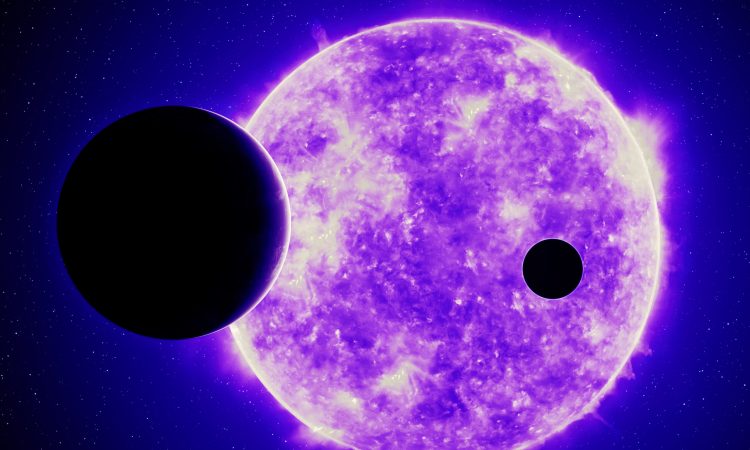
Astronomers from the University of Arizona, USA, along with an international group of researchers, have observed the atmosphere of a hot and bloated exoplanet using NASA’s James Webb Space Telescope.
The exoplanet, which is the size of Jupiter but has only one-tenth its mass, was found to exhibit an east-west asymmetry in its atmosphere, meaning there is a significant difference between the two edges of its atmosphere. The findings are published in the journal
“This is the first time that the east-west asymmetry of an exoplanet has been observed as it transits its star,” said study lead author Matthew Murphy. A transit is when a planet passes in front of its star – as the Moon does during a solar eclipse.
An exoplanet’s east-west asymmetry refers to differences in atmospheric characteristics, such as temperature or cloud properties, observed between the planet’s eastern and western hemispheres. Determining the existence or non-existence of this asymmetry is essential for understanding the climate, atmospheric dynamics and weather patterns of exoplanets – planets that exist beyond the Solar System, he writes.
The exoplanet WASP-107b is locked in resonance with its host star
Astronomers have learned that the exoplanet WASP-107b is locked in resonance with its host star. This means that the exoplanet always faces the same side towards its star. One hemisphere is locked in resonance and is permanently pointed towards the star, and the other hemisphere is always pointed away from the star, meaning that there is one permanent day side and one permanent night side on this unique exoplanet.
Murphy and his team used the technique of transmission spectroscopy using the James Webb Space Telescope. That’s the main tool astronomers use to get information about what it’s made of, Murphy said.
The telescope took a series of snapshots as the planet passed in front of its host star, encoding information about the planet’s atmosphere. Taking advantage of new techniques and the unprecedented precision of the James Webb Space Telescope, the researchers were able to separate the signals from the eastern and western parts of the atmosphere and get a more focused look at the specific processes taking place in the exoplanet’s atmosphere.
in that it has very low density and relatively low gravity, resulting in an atmosphere that is puffier than other exoplanets of its mass.
“We have nothing like it in the Solar System. It’s unique, even among the exoplanet population,” Murphy said.
WASP-107b, a unique exoplanet
“Traditionally, our observational techniques don’t work as well for these intermediate planets, so there were a lot of interesting open questions that we can finally start to answer,” Murphy said. “For example, some of our models have told us that a planet like WASP-107b shouldn’t have this asymmetry at all — so we’re already learning something new.”
“Researchers have been observing exoplanets for nearly two decades, and numerous observations from the ground and from space have helped astronomers guess how,” said Thomas Beatty, co-author of the study and assistant professor of astronomy at the University of Wisconsin-Madison.
Murphy and his team have been working on the observational data they’ve gathered and plan to analyze what’s going on with the exoplanet in much more detail, including through additional observations, to understand what’s driving this asymmetry.

